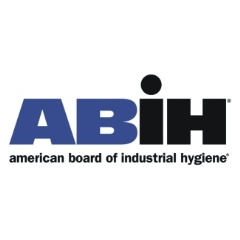Preventing Occupational Exposure Risks to Methane
The American Board of Industrial Hygiene® (ABIH®) reminds workers and industry of the need to protect against exposure to potentially harmful gases.
There are a number of occupations where workers can be exposed to elevated levels of methane in addition to the natural gas industry.
Last month, the U.S. Department of Energy (DOE) announced a total of $13 million that will be awarded to twelve, multi-year research projects intended to develop cost efficient and effective ways to mitigate methane emissions from natural gas pipeline and storage infrastructure. Methane is not only a primary component of natural gas, it is also a major greenhouse gas, which is a potential asphyxiant for workers and the public.
There are a number of occupations where workers can be exposed to elevated levels of methane in addition to the natural gas industry. Workers could be exposed to methane by the emissions from burning fossil fuels in vehicles, fuel-burning equipment and power plants. Oil fields and hydraulic fracturing can emit methane and it is released from coal deposits during underground and surface mining. Landfill workers and those exposed to human or animal waste at wastewater treatment plants or agricultural operations could also be at risk of exposure to high levels. Methane is also used to make other chemicals such as ammonia, formaldehyde, hydrogen and methanol.
“Although workers and the public are exposed to low levels of methane by simply breathing outdoor air, exposure to elevated levels can be hazardous,” said Susan Ripple, CIH® and Chair of ABIH®. “Methane is a colorless, odorless and extremely flammable gas that can be explosive when mixed with air. In high concentrations, it may displace a person’s oxygen supply, especially in confined spaces. Exposure can also cause headache, dizziness, weakness, nausea, vomiting and loss of coordination. Skin contact with liquid methane can cause frostbite.”
It is critical to evaluate, monitor and communicate to workers their exposure risks to methane in industries where they can be exposed. Fulfilling this role are Certified Industrial Hygienists who are uniquely qualified to conduct methane risks assessments and protect workers from hazards. Core competencies of CIHs include air sampling and instrumentational analysis; chemical and biohazards; engineering controls and ventilation; health risk analysis and hazard communication; and work environments and industrial processes. This knowledge and the proper use of personal protective equipment can be instrumental in reducing exposure risks to methane and other potential occupational hazards.
To learn more about the American Board of Industrial Hygiene®, Certified Industrial Hygienist® credential or to locate a CIH® to perform industrial hygiene services, please visit www.ABIH.org, email abih@ABIH.org or call (517) 321-2638.
About the American Board of Industrial Hygiene ®
Since 1960, ABIH®, a not-for-profit corporation, has been the world’s largest organization for certifying professionals in the practice of industrial hygiene. ABIH® is the premier credentialing body responsible for ensuring high-quality certification including education, experience, examination, certification maintenance and ethics enforcement. Currently, more than 6800 people in 32 countries are certified to use the CIH® designation.
( Press Release Image: https://photos.webwire.com/prmedia/12710/205408/205408-1.jpg )
WebWireID205408
- Contact Information
- Paul Cochrane
- President
- Cochrane & Associates, LLC
- Contact via E-mail
This news content may be integrated into any legitimate news gathering and publishing effort. Linking is permitted.
News Release Distribution and Press Release Distribution Services Provided by WebWire.
